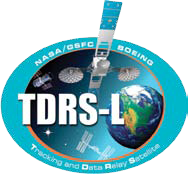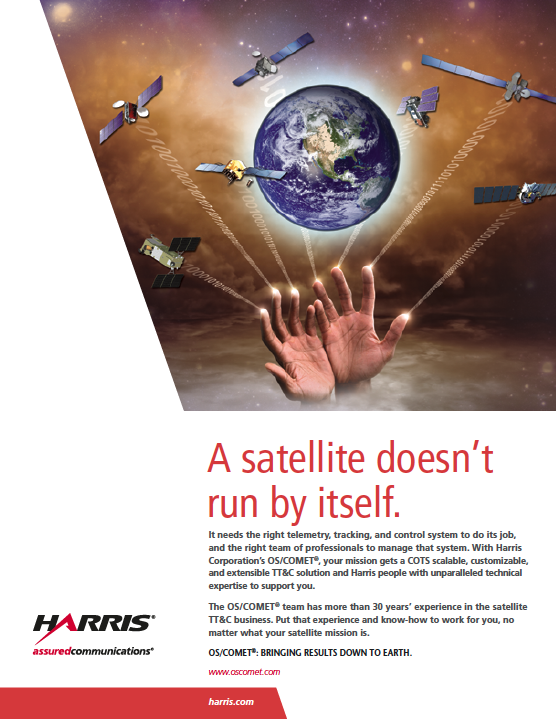I have to admit that there’s a soft spot in my heart for NASA’s Tracking and Data Relay Satellites. It was a tad more than 25 years ago that I had the rush of supporting my very first space shuttle launch, and it was a biggie: the launch of space shuttle Discovery on mission STS-26R —NASA’s return to flight, our first flight following the loss of Challenger nearly three years before.

The emotional atmosphere was incredibly charged, and the media village that sprouted up at the KSC press center was huge and demanding, both an opportunity and a burden for the public affairs teams supporting the launch. Fortunately for me, I was too focused on the TDRS payload in Discovery’s payload bay to get swept up in much of the Return to Flight frenzy.
I suppose I should more accurately say I was focused on the Boeing Inertial Upper Stage (IUS) that would deliver TDRS-C to its final position in orbit, an unprepossessing little workhorse of an upper stage engine that would also deliver such interplanetary spacecraft as Magellan, Galileo and Ulysses, and, in a way, put me in a position to directly support shuttle-based exploration for a decade.
It was the recent, successful launch by United Launch Alliance that triggered my little trip down memory lane. On January 23rd, a ULA Atlas V rocket successfully launched NASA’s TDRS-L satellite from Launch Complex 41, Cape Canaveral Air Force Station. The first of 15 missions planned for 2014 by ULA, it was also the 78th consecutive successful launch for ULA in just over seven years. TDRS-L has quite a legacy to live up to—the TDRS-C we launched in 1988 had a designed life of 10 years...and is still in service more than 25 years later.
The TDRS-L mission pulled off with such aplomb by ULA is part of an incredible burst of specific impulse put on by the worldwide space community in January to launch 2014 on a stellar trajectory:
– In January, the Space Foundation and NASA held several special events at Space Foundation World Headquarters and the Space
Foundation Discovery Center, as part of the world premier of Water Falls, a new public education initiative linked to the Global
Precipitation Measurement (GPM) mission, set to launch later this month (February 27) aboard a Japanese HIIA rocket from JAXA’s
Tanegashima Space Center.
– On January 27, 2014, the South Korea Ministry of Science, ICT and Future Planning formally launched its Moon exploration program
—which aims to put its first lander on the Moon by 2020.
– On January 6, SpaceX successfully launched the Thaicom 6 satellite, built by Orbital Sciences Corp. for Thai satellite operator Thaicom,
from Cape Canaveral Air Force Station. Next up for SpaceX will be CRS-3, the company’s third ISS resupply mission for NASA,
featuring the company’s Dragon capsule riding aboard a Falcon 9 rocket.
– Not to be outdone in the ISS resupply sweepstakes, on January 9,
Orbital Sciences successfully launched its Cygnus commercial cargo
carrier to the ISS, aboard the company’s privately developed
commercial rocket, Antares, from the Virginia Spaceport.
– Virgin Galactic conducted its third powered test flight of
SpaceShipTwo on January 10, going supersonic (Mach 1.4) and
reaching 71,000 feet over the Mojave Air and Space Port in California.
– Also in January, Arianespace announced flight dates for its first
three missions from the Kourou Spaceport in 2014—two Ariane 5
flights and one Soyuz flight, lofting five satellites for satellite
operators ABS, SES, Hispasat and ESA.
– That almost-forgotten solar system Rip Van Winkle, a.k.a. ESA’s
Rosetta spacecraft, awoke in January after hibernating for 31
months in the cold of deep space. Returning to the light and warmth
of the inner solar system, Rosetta woke up and started preparing for
its upcoming comet rendezvous—a gutsy, $1.7 billion attempt to
orbit a comet and place an instrumented lander on its icy surface.
– As if to remind us all of the allure of the Red Planet, the Mars
Exploration Rover Opportunity celebrated its 10th anniversary on
the Martian surface by turning over a mysterious rock that seemingly
appeared out of nowhere—prompting speculation: “are the
Martians just messing with us?” Between Opportunity, Spirit and
Curiosity, a ton of effort continues to go into answering this question,
and two more spacecraft are on the way: NASA’s MAVEN orbiter,
due to arrive in late September, and India’s Mangalyaan spacecraft,
also due to arrive at Mars in September of this year.
– And, let’s not forget that while at Kennedy Space Center for the launch of TDRS-L, ULA President Michael Gass joined with
Sierra Nevada’s Mark Sirangelo and Space Florida’s Frank DiBello to announce an agreement to parlay currently under-utilized
facilities at KSC into a commercial-style operating site for SNC’s Dreamchaser reusable spacecraft. The deal includes the purchase of an
Atlas V launch vehicle from ULA, the sharing of Operations & Checkout facilities with Lockheed Martin, use of the former Shuttle
Landing Facility for Dreamchaser operations—a win-win-win for NASA, the commercial crew program, for KSC Center Director Bob
Cabana’s efforts to revitalize aging infrastructure, ULA’s plans to play in commercial crew, and Space Florida’s dreams of a
vibrantly repurposed KSC.
Of course, as we’ve all heard so many times, “No bucks, No Buck Rogers.” Despite the increasingly commercial approach to space exploration, it is important to remember that strong political support for government space programs is crucial to our industry.
In that regard, January was also a good month for us. As the House and Senate quickly moved an historic two-year federal budget, a deep dive into the space accounts therein revealed to the Space Foundation some delightful surprises, including a slight increase to the NASA budget. The U.S. Air Force, working with ULA, was able to craft some significant EELV savings, relieving some of the pressures from other Air Force space accounts.
Far from perfect, but compared to the government shutdowns and sequestration that have characterized the last two years, a much better scenario and another win-win for our industry.
Our view is that we’re Rockin’ in the Space World. If January is any indication, 2014 is going to be a year of monster hits. Sure, there’ll be a sour chord sounded here and there, and we’ve major challenges ahead in Space Situational Awareness, in Cyberspace, in getting ITAR reform across the finish line, and more. But the sound of missions launching and important programs reaching MaxQ is a sweet, sweet song.
We’re going solid gold, with a bullet!
For further information regarding Space Foundation, access http://www.spacefoundation.org/

About the author
Named chief executive officer of the Space Foundation in 2001, Elliot Pulham leads a premier team of space and education professionals providing services to educators and students, government officials, news media and the space industry around the world. He is widely quoted by national, international and trade media in coverage of space activities and space-related issues.
Before joining the Space Foundation, he was senior manager of public relations, employee communication and advertising for all space programs of Boeing, serving as spokesperson at the Kennedy Space Center for the Magellan, Galileo and Ulysses interplanetary missions, among others. He is a recipient of the coveted Silver Anvil Award from the Public Relations Society of America—the profession’s highest honor.
In 2003, the Rotary National Awards for Space Achievement Foundation presented him with the coveted Space Communicator Award, an honor he shares with the late legendary CBS News Anchor Walter Cronkite and former CNN News Anchor Miles O’Brien. Pulham is chairman of the Hawaii Aerospace Advisory Committee, a former Air Force Civic Leader and advisor to the Chief of Staff and Secretary of the Air Force and a recipient of the U.S. Air Force Distinguished Public Service Medal. He serves on the editorial board of New Space Journal.
Editor’s note:
Our thanks to Space Foundation for allowing us to republish Elliot’s column from the organization’s Space Watch newsletter.



